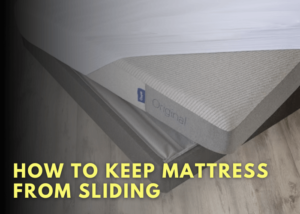How often do you have to sleep upright and never think about it until your head flops to one side or even forward? How can you reduce stress on the spine?
When we commute on public transportation or take a break from driving, we often sleep upright. You can protect your cervical spine from sudden jolts by taking small steps. If you can, use a travel pillow, don’t lean against a window or solid object, and buckle up whenever you can.
Can you sleep while sitting upright?
Yes, you can. It takes a little forethought, but you can buy a decent travel pillow to support your neck. Yes, they look unsightly, and you may feel embarrassed using a travel pillow, but if it prevents your neck from becoming stressed, then it’s worth it.
Finding a way to sleep sitting up is somewhat of a challenge, but if your seat has a recline function, you can recline a few degrees and sleep reasonably well.
If you need a solution to finding a way to sleep upright comfortably, invest in a travel pillow. Travel pillows offer good support, and many you can inflate and get the firmness you require.
It is agreed you may not look the coolest person around using a travel pillow, but the truth is they do prevent neck injury and allow you to get some uninterrupted sleep while sleeping upright.
If you need to sleep in a seat upright, it is important not to slouch. It looks pretty tempting to slouch into a comfortable position, but you will pay the price for twisting your spine.
If you contort your spine, the pain can be incredible, and as you lie in this position, your muscles will try to compensate and correct the alignment. The bad news is the muscles will not be strong enough, and you will have back issues.
To prevent this scenario, sit upright with your feet planted on the floor and relax in this position.
Some medical conditions may require you to sleep upright, so learning how to sleep propped up.
Sleeping propped up may sound undignified, but it can be a comfortable way of sleeping, particularly if you have bouts of GERD.
Surrounding yourself with pillows that are both soft and firm will allow you to prop yourself up. There is no need to be upright, but the greater the elevation, the better. Say four pillows under your back. One behind your head will make for a relaxing night’s sleep.
How to sleep upright without soreness?
Finding out how to sleep upright is not as hard as you first may think. However, suppose you are experiencing soreness from an injury or after surgery. In that case, you will find that loose clothing and various pillows, and rolled towels can reduce soreness from pressure points.
Several orthopedic wedges of varying sizes will show you how to sleep reclined in bed in a comfortable manner that will keep your spine aligned.
If you don’t have orthopedic wedges, you can still learn to sleep upright in bed. Sleeping upright is not a great idea, but it can be done. It will require you to rest your back against the headboard or wall.
Surround yourself with cushions and pillows and almost build yourself a pillow cave. The pillows will need to be supported, and there will need to be a slight rake angle to prevent you from slumping forward.
Alternatively, some reclining beds have an almost upright angle to allow you to sleep vertically.
Learning how to sleep vertically is full of challenges over the long term. Extra pressure will be placed on your spine while supporting your weight through the night.
Again if you are in this position, it is essential to be supported by pillows on either side. It would also be advisable to take a central position on the bed to prevent you from flopping out of bed onto the floor.
Is it possible to sleep standing?
If you want to learn how to sleep, standing up will be a tough order. The sleeping process involves relaxing the muscles in your body, which would see you fall in a heap on the floor.
Even in outer space, astronauts sleep in sleeping bags lying down.
There is one exception to the rule other than weird experiments: when you sleepwalk, you are asleep.
It reported that 29% of children sleepwalk and fewer adults. Actually, you are in a state of semi-consciousness, but nonetheless, it’s called sleepwalking so that you can sleep while upright.
How to find my most comfortable sleeping position?
You would naturally assume that the sleeping position you fall asleep in is the best sleeping position for you.
However, it’s suggested that the position you wake up in is likely to be your ideal sleeping position.
The fact is some of us toss and turn the whole night while others of us barely make an impression on the bedding.
Unless we purposely train ourselves to sleep in a particular position, we sleep without consciously moving through the night.
But training yourself to sleep in a position can greatly benefit your health and appearance.
If you are tired of those morning wrinkles on your cheeks and eye bags, then the only position for you is to sleep on your back.
Gravity will gradually iron out the wrinkles on your face leaving you looking rejuvenated and refreshed. The same goes for eye bags and dark eyes. Gravity pulls the fluids away from your face.
Each sleeping position has its benefits, but we must consider what happens to our spine when we sleep and combat the effects of sleep on our cervical spine and lower back.
Waking up with a stiff neck or back is no joke and can’t be left to rectify itself. The correct sleeping position combined with a well-crafted mattress and pillows will pay dividends when sleeping.





